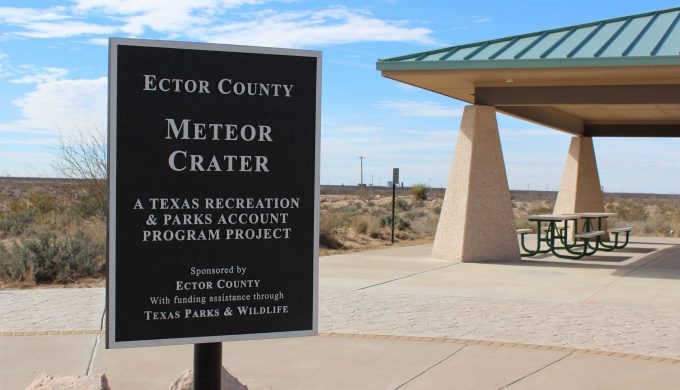The town of Odessa was founded in 1881, but the spot where it lies was established a bit before that date. Thousands of years before, in fact. And it was marked in a BIG way: by a series of meteorites which now form The Odessa Meteor Crater and four smaller craters nearby. One of three impact crater sites found in the Lone Star state, Odessa’s version is part of the trio with the Sierra Madera crater and the Marquez crater.
Measuring at 550 feet in diameter, the Odessa Meteor Crater was originally about 100 feet deep. However, due to blowing soil and debris since impact, it is currently 15 feet deep at its lowest point. The other, smaller craters range in size from 15 to 70 feet in diameter, and from 7 to 18 feet in depth. All of the craters formed through the impact of thousands of nickel-iron meteorites.
As the main crater has been probed and no meteorite found, it is believed the impact vaporized the object. However, pieces of it can still be found. The largest located piece weighs approximately 300 pounds. Finding part of the Odessa Meteorite identified it as a further anomaly, as it is a metallic meteorite; only about 10% of all the meteorites which strike our planet are metallic. Typically, meteorites are stony and are similar to rocks found on earth.

Photo: Courtesy discoverodessa.org
The first recorded discovery of the crater was made by rancher Julius Henderson in 1892. At first, it was thought to be a hole caused by an eruption of trapped gas below the surface. In the 1920s, the crater was identified as such. Then, from 1939 through 1941, until the outbreak of World War II, the crater was excavated and studied closely. The site containing the Odessa Meteor Crater, and its smaller companions, was donated in 1979 by the Texas Pacific Land Trust to the county. The Texas legislature appropriated funds to build a visitor’s center in 1999, and the facilities opened to the public in early 2002. The site is an officially designated National Natural Landmark. Visit this interesting glimpse into prehistoric Texas by traveling approximately 3 miles south of Interstate 20 at Exit 108 (Moss Road).



